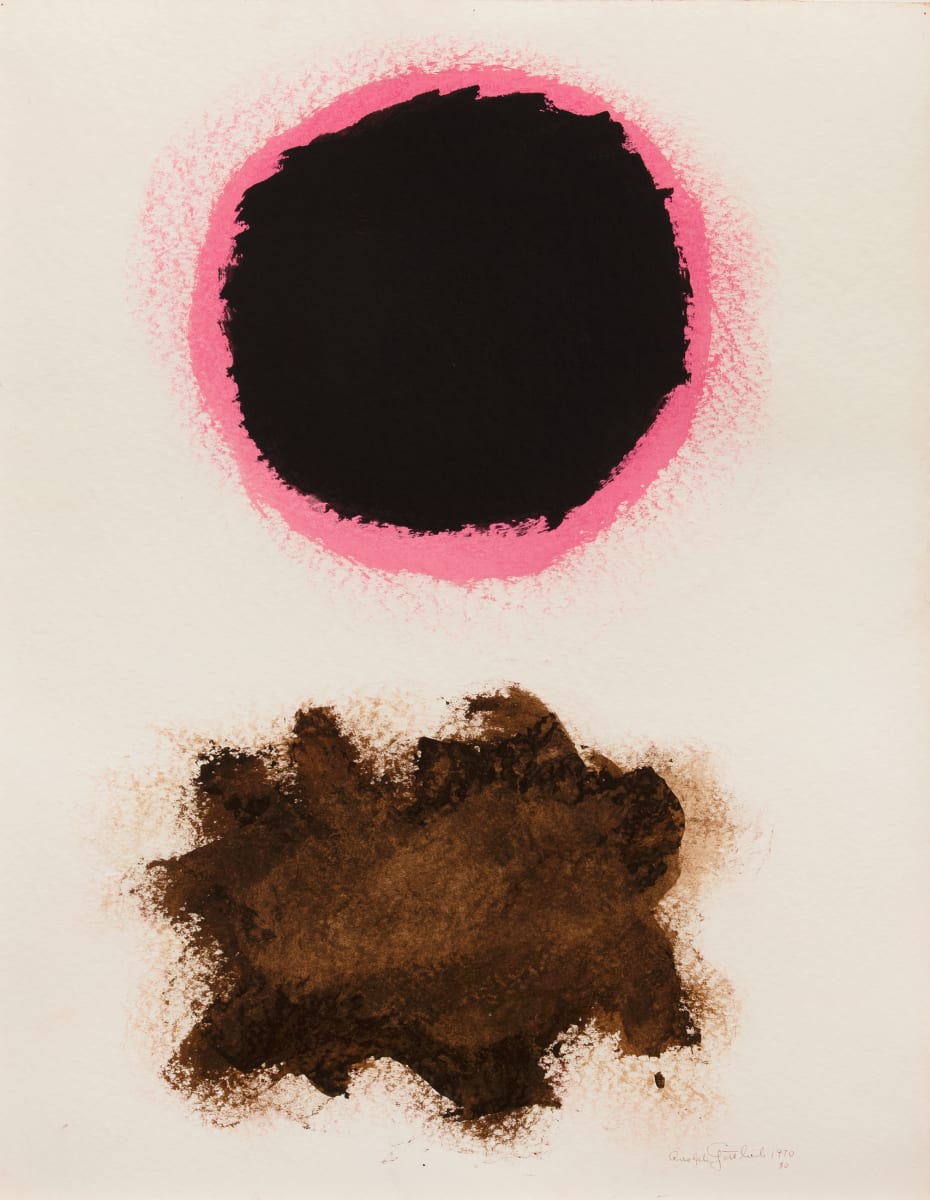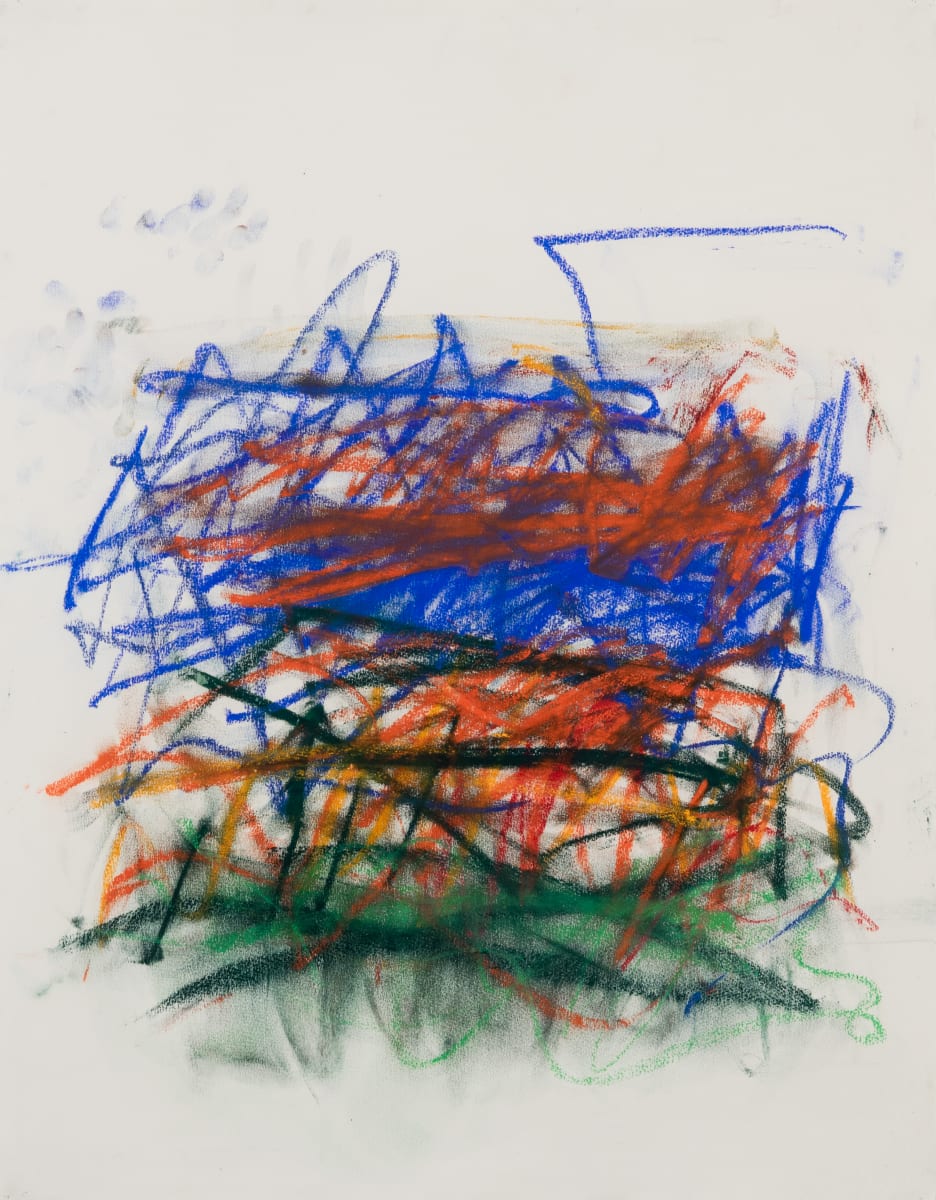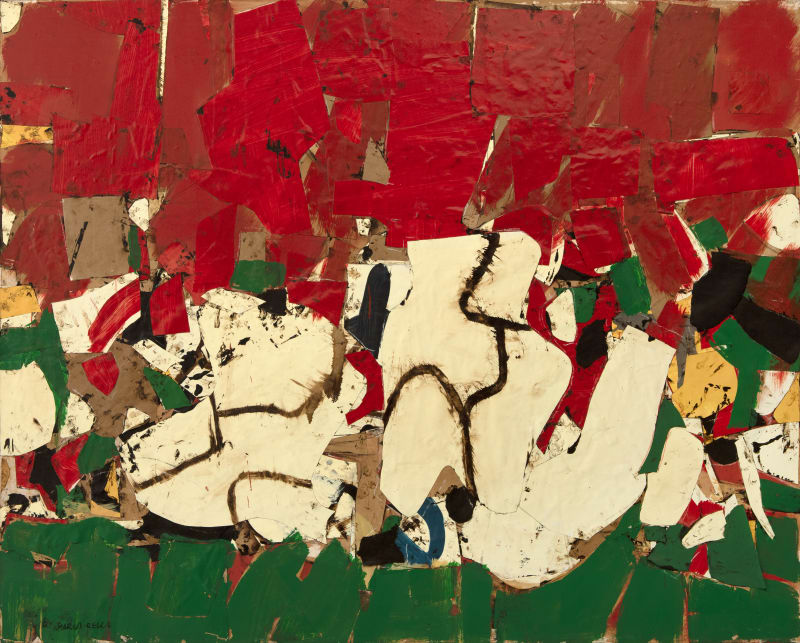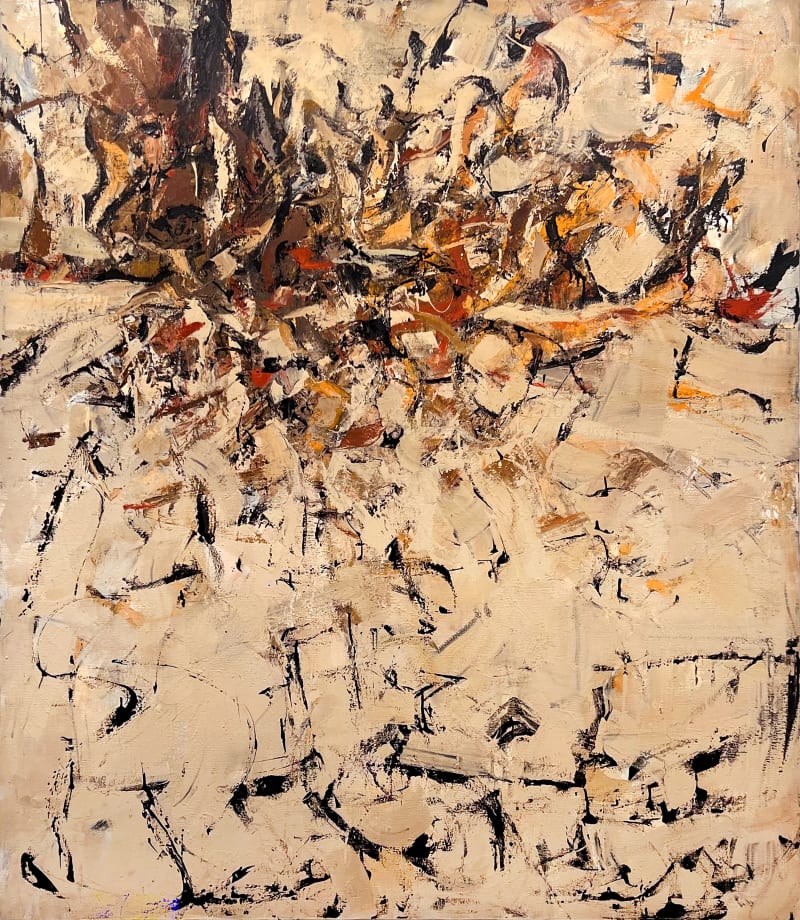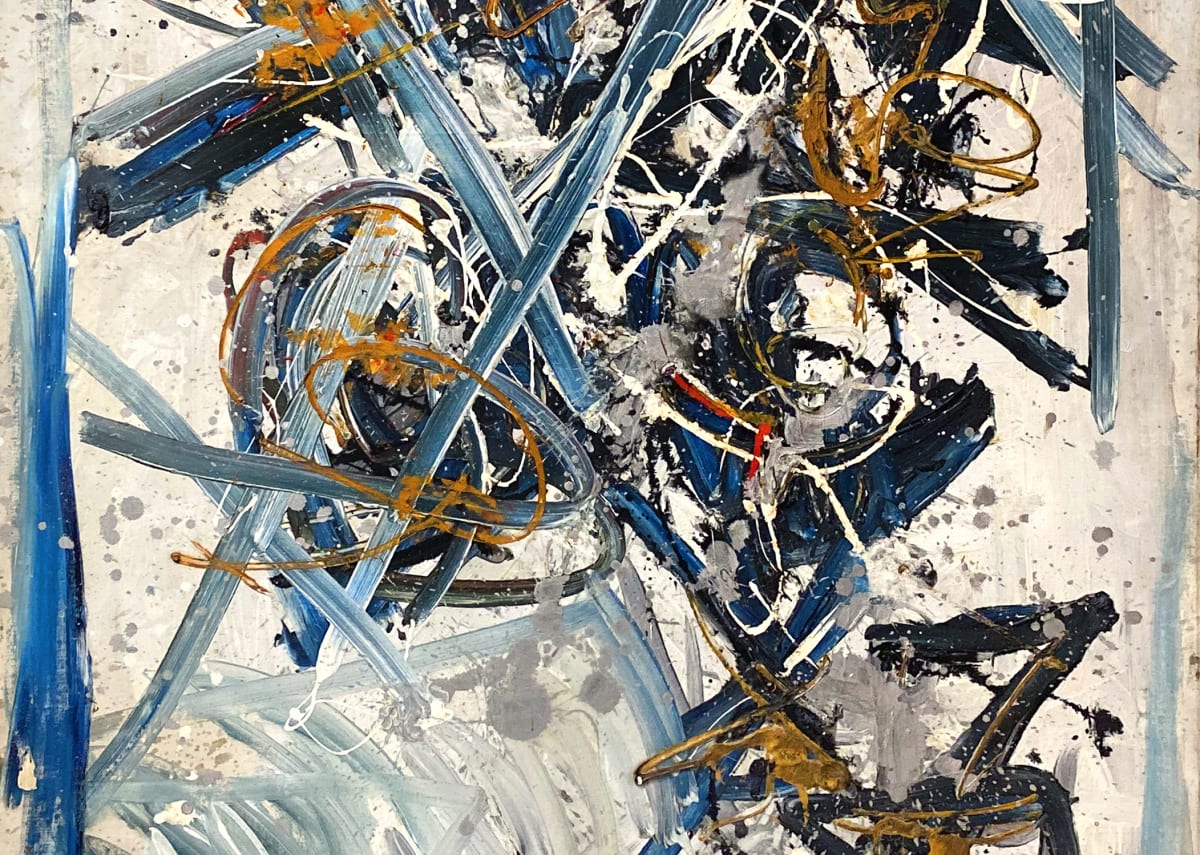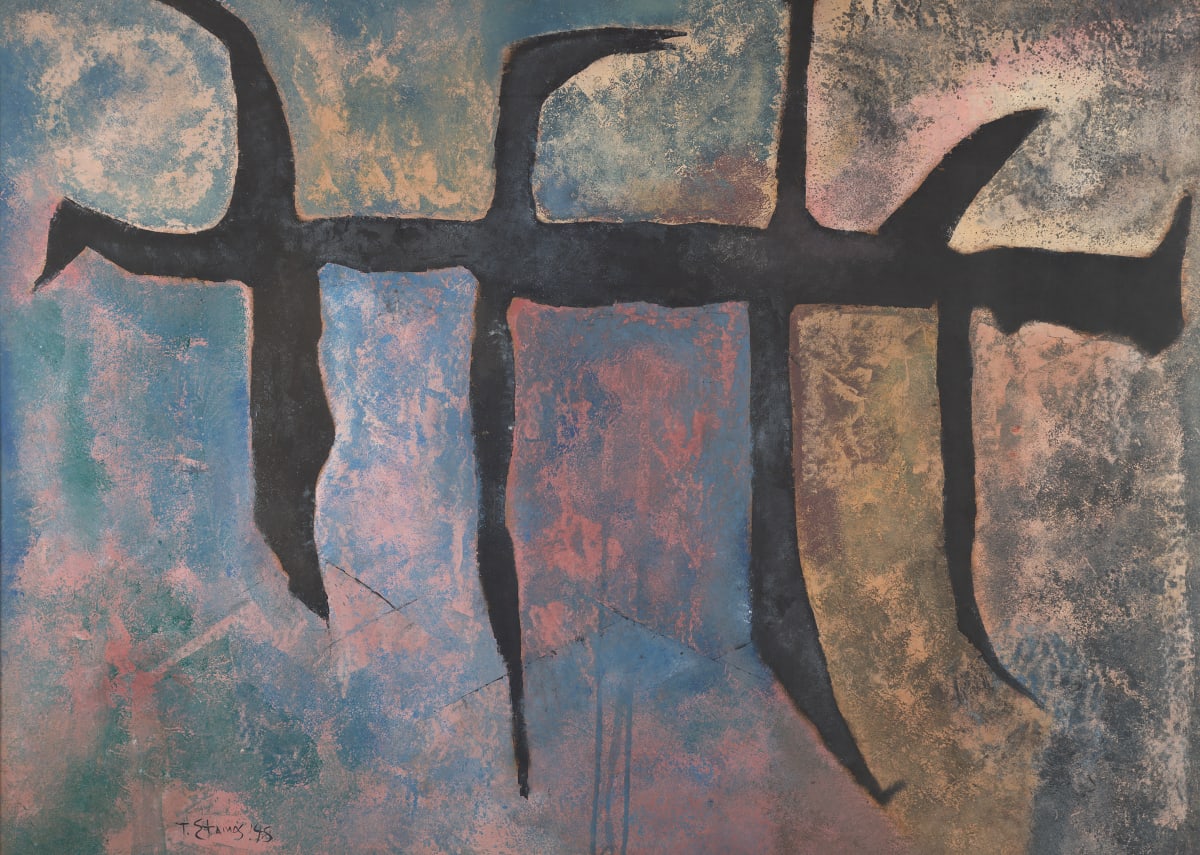BOOTH 701
Hollis Taggart's 2025 booth will feature a selection of historically significant works by abstract artists such as Joan Mitchell, Roy Lichtenstein, Janice Biala, Michael (Corinne) West, Adolph Gottlieb, Hans Hofmann, Richard Pousette-Dart, and more. These historic works will be paired with abstract paintings by contemporary favorites, Chloë Lamb and Bill Scott.
BOOTH 703
Hollis Taggart is pleased to present works by Norman Carton and Albert Kotin, two New York School painters who actively shaped the Abstract Expressionism movement. Both artists hailed from what was then part of the Russian Empire: Kotin was born in Minsk, and Carton was born in the Dnieper Ukraine territory, one year after Kotin. After years as a refugee, Carton finally settled in Philadelphia at age fourteen in 1922, while Kotin immigrated to the United States a year after he was born. Perhaps owing to their shared backgrounds as immigrants, they quickly adapted to the avant-garde circles of artists in New York, who were also themselves refugees.
In the 1950s, Carton became known for his virtuosity as an intuitive colorist, exhibiting alongside Grace Hartigan, Franz Kline, and Joan Mitchell in the 1955 Whitney Biennial. With the support of noted gallerists like Martha Jackson, Carton created vibrant and expressive paintings with impasto brushstrokes. The seemingly spontaneous nature of his paintings’ colors belies the artist’s exacting process of grinding his own pigments to produce controlled colors, fine-tuned to his specific requirements. Carton was influenced by the great colorist Arthur B. Carles, whose paintings were also guided by both feeling and chromatic accuracy. In 1962, with two other artists, Carton formed the Dewey Gallery, one of the first New York City galleries owned and operated by artists. Well into the 1970s, he was intimately involved with the Abstract Expressionism movement in New York and exhibited widely. His work is held in more than 20 museum collections, including the Whitney Museum of Art; Yale University Art Gallery; Chrysler Museum of Art; and the National Gallery of Art, among others.
If Carton’s works speak to his exemplary sense of color, Kotin seems to have been deeply interested in the spatial elements of a painting. In the 1950s, as he enjoyed a prolific output as part of the “Downtown Group,” a circle of artists in lower Manhattan that included Franz Kline, Willem de Kooning, and Jack Tworkov, Kotin created paintings with all-over, heavily textured surfaces. Often experimenting with dense tangles of marks that seem to move in an eolic fashion, Kotin conceptualized space as “interwoven within itself” and as “a curtailed infinity moving with a force that creates an element of time and emotion.” His practice connected with the predominant dialogues and arguments of the time and captured his own grappling with questions of abstraction and expressionism. As the artist Alexander Calder wrote in 1968, "As long as there are people such as Al Kotin, there is no danger to art." Kotin’s work has been exhibited at the Library of Congress, Washington, D.C. (1947); The New School for Social Research, New York (1948); Stable Gallery in New York (1951, 1953-1957); Contemporary Arts Museum in Houston (1959); the Museum of Modern Art in New York (1963-64); and Long Island University, New York (1968), among others.
For more information on the gallery's booth presentations please contact us at +1 212.628.4000 or info@hollistaggart.com.
Venue
Booths 701 & 703Palm Beach County Convention Center
650 Okeechobee Blvd.
West Palm Beach, FL 33401










